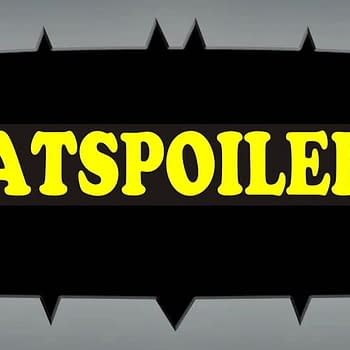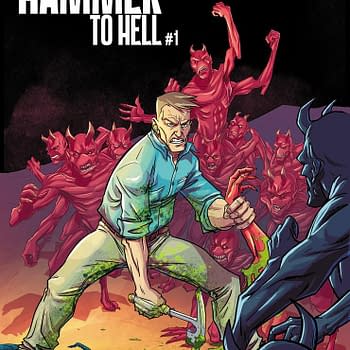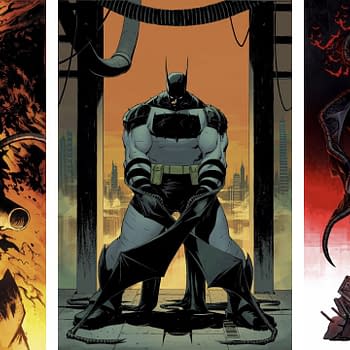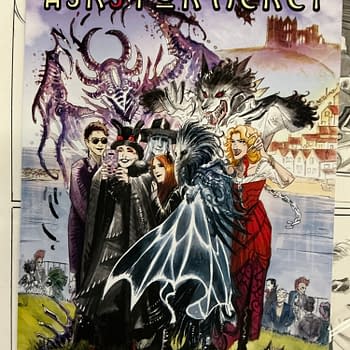Posted in: Comics, Recent Updates | Tagged: Comics, dc, dc comics, entertainment, gendercrunching, marvel, Marvel Comics, women in comics
Gendercrunching March 2015 – Variant Covers Drive Marvel And A Blast From The Past
By Tim Hanley
DC slipped down slightly in March while Marvel catapulted forward on the strength of their "Women of Marvel" variant cover line to post the higher percentage of female creators for the first time in a while. We also don our fez and bowtie to go back in time and check out some statistics from the past.
DC COMICS
While Marvel had a special, women-centric promotion, March was a fairly normal month for DC; they won't mix it up until "Convergence" in April. In March 2015, DC Comics released 80 new comic books with 726 credited creators, 638 men and 88 women. Here are their stats:
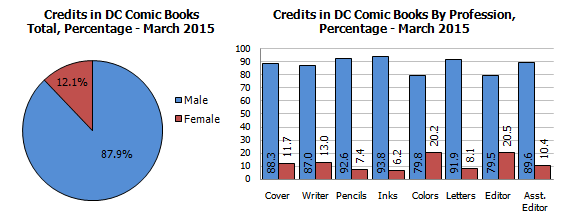
Compared To A Year Ago: DC was at 12.5% last March, so they're down 0.4% since then.
MARVEL COMICS
Marvel was much bolstered by their "Women of Marvel" variant cover program, but there are other reasons to be optimistic moving forward as well. In March 2015, Marvel put out 75 new comics featuring 613 credited creators, 523 men and 90 women. Let's look at the numbers:
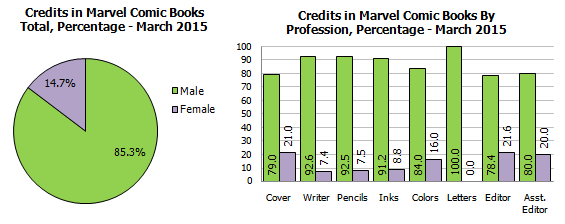
Compared To A Year Ago: Marvel was at 12.1% last March, so they're up 2.6% since then.
DC AND MARVEL, 1991-2011
A few years ago we went back to look at 1996, 2001, and 2006 to compare the numbers at DC and Marvel then with our recently completed 2011 totals. It was a bit of a downer all around, with no real significant change for either publisher's overall percentage of female creators in that timespan. This month, we're jumping in the wayback machine again to visit 1991, and see how things compare.
The methodology is fairly straight forward. I run full, complete stats for January and July to get a sense of the year, and then we chart it all up like normal and compare. It's not an exact portrait of the year, but it's a decent snapshot of where each publisher was at the time. So let's take a look at the numbers, with a chart that shows 1991, 1996, 2001, 2006, and 2011. We'll start with DC:
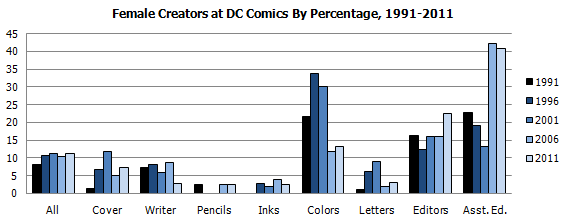
Writers came in at 7.3%, which is low by today's standards but the third best total among the five years charted here. Colorists were at an impressive 21.7%, big compared to today, and massive compared to 2006 and 2011, but nothing compared to the 30s of 1996 and 2001. Editors' 16.3% is the second best total on the chart, while the 22.9% for assistant editors is middle of the pack but considerably more than we saw from DC this month.
In terms of historical comparison across the board, the lows in 1991 were rather paltry and the highs were mid-range, so it's no wonder that DC's overall percentage of female creators was so low. The numbers these days may not be great, but we can say: "At least it's not like 1991!" Except for last September, when DC posted 8.4% female creators overall. That was a lot like 1991. Also, in 24 years DC has moved from 8.1% to 12.1%. That's some small growth for almost a quarter of a century.
Now to Marvel's numbers:

Writers were big in 1991, coming in at 9.6%; that's better than Marvel THIS month, 24 years later. Pencillers and inkers were in the 4% range, the highest totals on the chart, while colorists were at 23.6%, their second best showing. Marvel even had letterers, and a lot of them: 12.4%, for another second best showing. Today, Marvel hasn't had a female letterer since January 2011. Assistant editors came in second as well, with 23.3%.
Here's a little bit of perspective for you: Nearly a quarter of a century ago, Marvel had a higher percentage of female creators than they've had in 10 of the past 12 months. Way to go, Marvel of the past, and what the heck, Marvel of the present? The pool of talented female creators is the biggest it's ever been, and on very rare occasions you can do slightly better than you did in 1991? That's just sad.
To learn more about this statistics project and its methodology click here, and to see the previous stats click here. You can visit Tim at Straitened Circumstances and follow him on Twitter @timhanley01. His book Wonder Woman Unbound: The Curious History of the World's Most Famous Heroine is available now.










